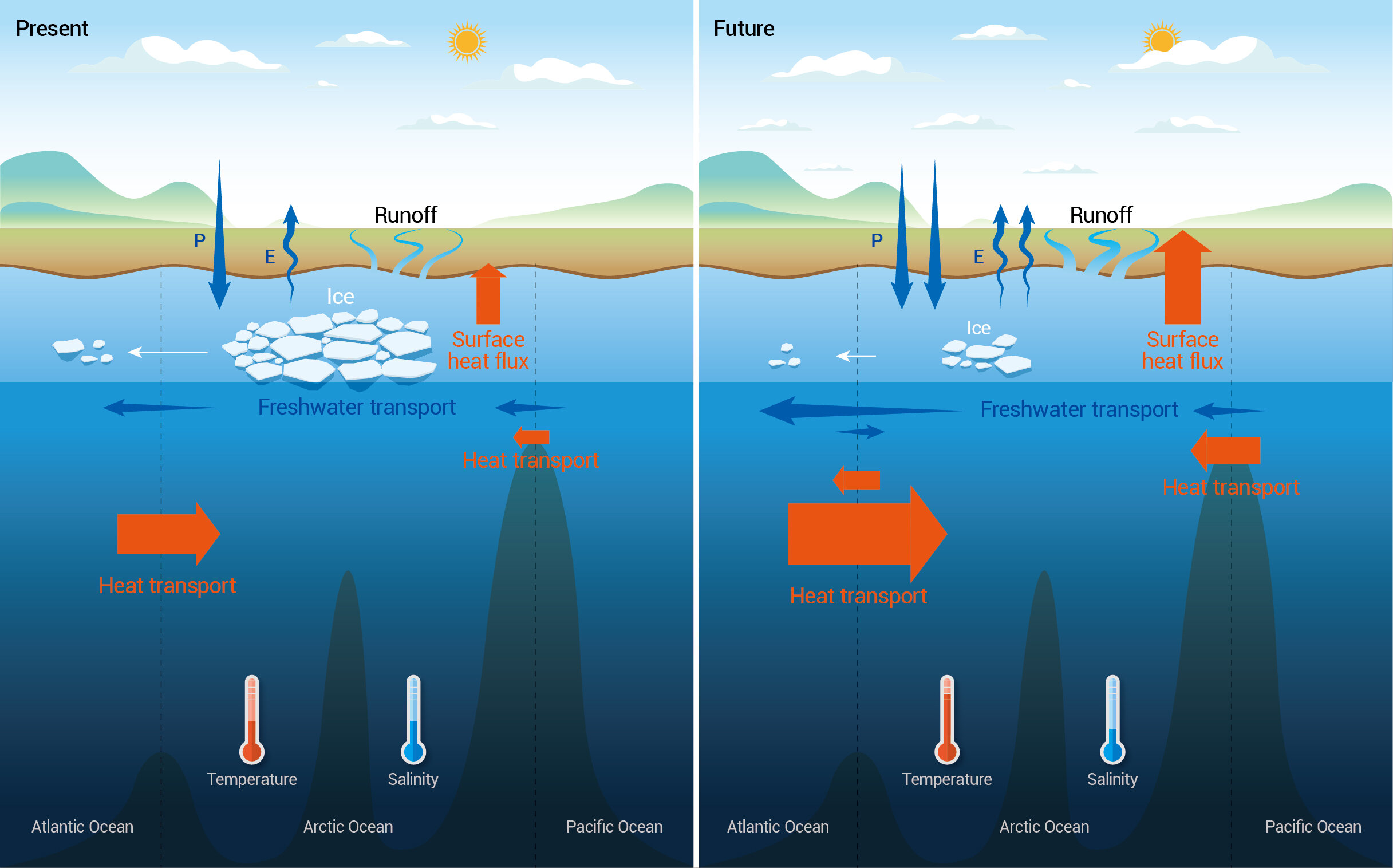Bengaluru, NFAPost: Bremerhaven, Germany – In a recent study published in the esteemed journal Ocean-Land-Atmosphere Research, a team of oceanographers shed light on the escalating heat transport to the Arctic Ocean, attributing the changes to the inflow of warm waters from the subarctic regions.
The researchers noted a substantial increase in the volume of ocean inflows responsible for carrying heat from the Pacific and Atlantic oceans into the Arctic. These findings indicate an intensified hydrological cycle connecting the Arctic with the subarctic seas, signalling an ongoing impact of climate change.
One of the significant consequences of this phenomenon is the reduced formation of sea ice in the Arctic Ocean, accompanied by a decrease in its salinity. The influx of low-salinity water from the Pacific Ocean has been identified as the primary cause for this change.
“Both the convergence of oceanic heat from lower latitudes to the Arctic Ocean and the hydrological cycle linking the Arctic with subarctic seas have displayed increased strength during the period from 2000 to 2020, surpassing the trends observed between 1980 and 2000. These changes are predicted to continue intensifying in a future warming climate,” stated Qiang Wang, senior scientist at the Alfred Wegener Institute Helmholtz Centre for Polar and Marine Research (AWI) in Bremerhaven, Germany and the first author of the review paper.
By analyzing prior studies and models focusing on Arctic-subarctic ocean connections, the researchers underscored the potential implications of these alterations. They revealed that predictions from the Coupled Model Intercomparison Project Phase 6 (CMIP6) indicate that the Arctic Ocean’s warming rate is expected to be double the global average. Furthermore, the ocean heat convergence into the Arctic is projected to maintain this accelerated pace.
The scientists also forecasted an increase in freshwater input to the Arctic Ocean due to amplified net precipitation, river runoff, and the overall decline of sea ice. Additionally, modelling suggests an upsurge in freshwater exports from the Arctic to the North Atlantic Ocean via the Fram Strait, a passage situated between Greenland and Svalbard. These changes will impact the Atlantic Meridional Overturning Circulation (AMOC), thereby influencing large-scale ocean circulations and climate patterns.
Notably, the researchers identified the Barents Sea Opening, positioned between Bear Island and the northernmost point of Norway, as the primary source of heat for the Arctic Ocean. This heat source contributes to the diminishing Arctic sea ice during cold seasons while fueling atmospheric warming.
Despite these crucial findings, the scientists emphasized that current observational instruments are inadequate for accurately measuring ocean transports in all the Arctic gateways. They stressed the urgent need for further improvement in both observational and modelling capabilities to effectively monitor and predict changes in Arctic-subarctic ocean linkages.
As the Arctic Ocean undergoes profound transformations, the implications for climate and marine ecosystems cannot be ignored. It is imperative that these developments spur global action to address climate change and protect the fragile Arctic environment before irreversible consequences occur.





